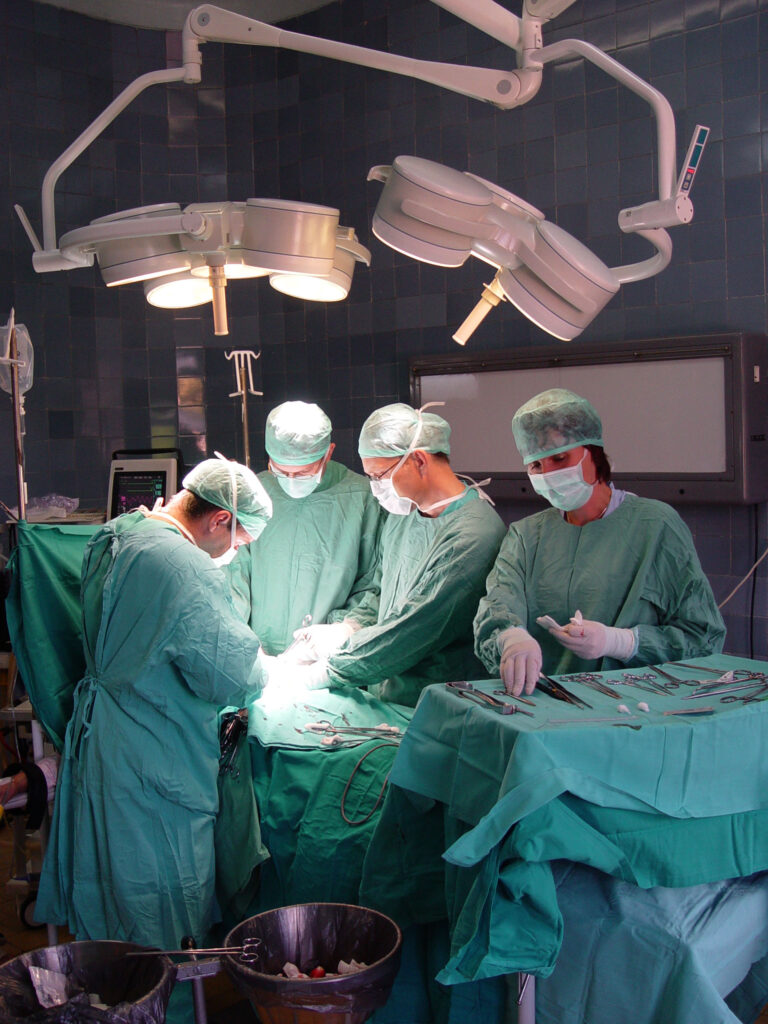Request Free Consultation
Easy. Quick. Confidential.
- We Respect Your Privacy. Privacy Policy.
- Protected By Google reCAPTCHA | Privacy - Terms
Generally speaking, doctors and their insurance carriers don’t like to admit that the doctor made a mistake and committed medical malpractice. They will fight hard to ensure the claim is dismissed and the injured party receives no compensation. From being the medical advocate for the patient, the doctor now becomes the patient’s adversary.
Sometimes, this happens even when the doctor knows a mistake was made. Sometimes, there is a good faith belief of the doctor that she did nothing wrong. Whatever the case, the injured party faces not just a battle but a war in an attempt to obtain justice.
Take for example this New York City medical malpractice case where the doctor failed to remove a retroperitoneal mass during an open biopsy, resulting in a delayed diagnosis and treatment of non-Hodgkin’s lymphoma.
A prior needle biopsy was suspicious of lymphoma. The primary doctor referred the patient to a surgeon for an open biopsy and removal of the retroperitoneal mass.
According to the operative report, the surgeon performed an exploratory laparotomy, exploration of the retroperitoneum, and excision of the retroperitoneal tumor.
After the surgery, the patient returned to both doctors with the same complaints and symptoms of left leg swelling. The primary doctor referred the patient to a vascular surgeon. There was no concern that the patient may still be suffering from cancer. Soon after, the patient went on his own to another doctor and was immediately referred to an oncologist. The oncologist diagnosed the patient with advanced lymphoma. The patient was afforded appropriate treatment with relief of symptoms and remittance of the cancer.
A lawsuit was started against both doctors alleging that the surgeon failed to remove the tumor mass during the open biopsy and that the primary doctor failed to refer the patient to an oncologist despite the awareness of the impression of lymphoma and the patient’s continuing symptomatology subsequent to the open biopsy.
After all discovery was had in the case, both doctors moved for summary judgment to dismiss the case.
The standard of the law for a party seeking summary judgment in a New York medical malpractice action, is that the “plaintiff, in opposition to a defendant physician’s summary judgment motion, must submit evidentiary facts or materials to rebut the prima facie showing by the defendant physician that he was not negligent in treating plaintiff so as to demonstrate the existence of a triable issue of fact” (Alvarez v. Prospect Hosp., 68 N.Y.2d 320, 324). General allegations of medical malpractice, merely conclusory in nature and unsupported by competent evidence tending to establish the essential elements of the claim, are insufficient to defeat a defendant physician’s entitlement to summary judgment (see Alvarez v. Prospect Hosp., supra at 325). The requisite elements of proof in a medical malpractice action are a deviation or departure from accepted practice and evidence that such departure was a proximate cause of injury or damage (see Prete v. Rafla-Demetrious, 224 A.D.2d 674, 675).
The material allegation in the case was that the surgeon failed to remove the retroperitoneal mass during the open biopsy. If, as the plaintiff alleged, the surgeon excised only the overlying fatty tissue surrounding the tumor, then pathology would not have the actual tumor mass to sample. As such, the pathology result of lipoma, although not incorrect, would have been based on the inappropriate sample resulting in a false impression.
The surgeon contended that the mass was removed during the surgery and since the pathology result was lipoma, there was no cancer in the plaintiff’s body at the time of the surgery.
The patient in opposition to the motion submitted sufficient expert medical opinion that established that the tumor, which is more coarse and gritty in consistency than fat, was not excised, and that only overlying fat was excised and sampled, which explained the pathology finding of lipoma.
This should have been sufficient to raise a question of fact to deny the motion against the surgeon. (The case against the primary doctor is not being discussed and was properly dismissed by the Supreme Court). Nevertheless, the Supreme Court granted the surgeon’s motion and dismissed the case.
Despite presenting significant evidence that the surgeon failed to remove the mass during the open biopsy, the Supreme Court dismissed the complaint against both doctors.



From being the medical advocate for the patient, the doctor now becomes the patient’s adversary.

Mr. DiMartini was called in to appeal the decision. He argued that the lower court erred in dismissing the action against the surgeon since there was a material issue of fact as to whether the mass was excised by the surgeon during the procedure.
An appeal was made to the Second Department. There the patient argued that the lower Court erred in granting the motion. The basis of the argument was that the lower Court was wrong in holding that there was insufficient evidence to establish that there was cancer at the time of the surgery since the pathology result found only lipoma. In effect, the lower Court insulated the surgeon from his mistake because of his mistake. If the surgeon never removed the cancerous mass how could a pathology report be positive for cancer?
The Appellate Court reversed and reinstated the patient’s case.
This was a hard-fought war, but justice prevailed and the patient received the compensation deserved.
In this New York City medical malpractice case, the plaintiff argued that the surgeon failed to properly remove a known mass during an exploratory laparotomy and excision of mass, and improperly diagnosed the mass as a retroperitoneal lipoma, which is benign and not cancer.
When the cancer returned and the plaintiff was diagnosed with lymphoma, an action was brought against the surgeon and internist. The defendant’s doctors moved for summary judgment seeking to dismiss the complaint. The trial court agreed with the defendants and dismissed the plaintiff’s action.
The expert affidavit submitted in support of the defendant’s separate motion for summary judgment established a prima facie case that his treatment of the plaintiff was not negligent. Nevertheless, his motion was improperly granted as the affirmation of the plaintiffs’ expert was sufficient to raise the existence of triable factual issues (cf. Alvarez v. Prospect Hosp., supra at 327; Fileccia v. Massapequa Gen. Hosp., 63 N.Y.2d 639, affg 99 A.D.2d 796). The expert recited specific facts in the medical record upon which the expert’s opinion was based (cf. Holbrook v. United Hosp. Med. Ctr., 248 A.D.2d 358, 359) and opined that the defendant’s deviations from good and accepted medical practice proximately caused the plaintiff’s injuries by delaying the diagnosis of lymphoma.
The New York Appellate Division reinstated the action against the surgeon. The plaintiff’s claim was eventually settled among the parties.
If you or a loved one has been injured as a result of a medical mistake or error by a doctor, surgeon, hospital, or nurse, you need an experienced New York City medical malpractice lawyer on your side.
We are here to answer your questions and investigate your potential claim.